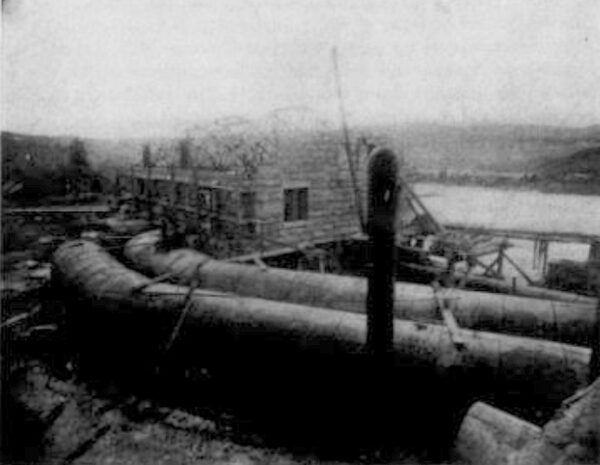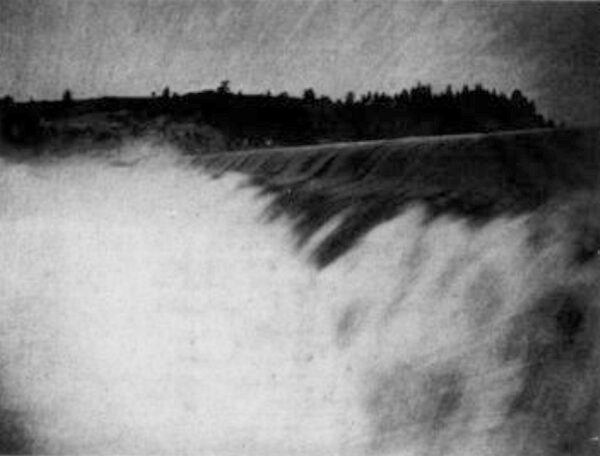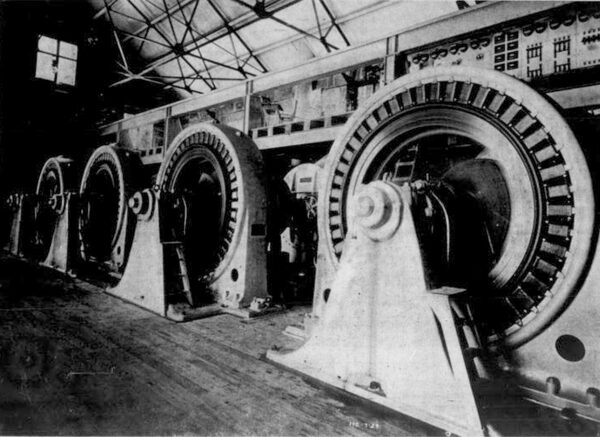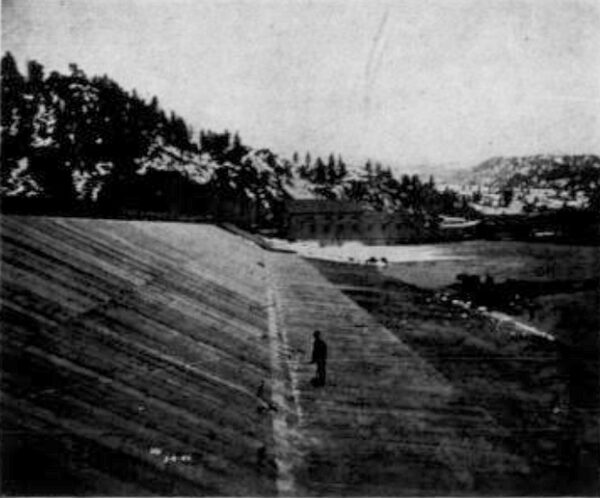[Trade Journal]
Publication: Electrical World and Engineer
New York, NY, United States
vol. 38, no. 2, p. 53-56, col. 1-2
Missouri River Power Company’s 50,000-Volt Transmission Plant.
THE Missouri River Power Company, of Helena, Mont., is building a 70-mile, 50,000-volt, three-phase transmission line from its power house on the Missouri River at Canon Ferry, Mont., to Butte, Mont. The plant is one of the largest in the Rocky Mountain district. It is at the present time supplying all the electric railway and lighting power for Helena, over a 12,000-volt transmission line, which has been successfully operated over two years. The smelters near Helena are also supplied with electric power, and, in fact, practically all the power used in Helena is transmitted from Canon Ferry.
| |||
| Fig. I.—Penstocks, With Power House Partially Completed. |
| |||
| Fig. 2.—Canon Ferry Dam. |
The Missouri River at points where a sufficient head of water can be obtained is one of the most magnificent sources of water power existing anywhere, because of its constant and large flow. At Canon Ferry the river valley is of such a shape that by the building of a dam 500 ft. long and about 4o ft. high, a lake one-half mile wide and six miles long was formed. The available head of water is 32 ft. Some idea of the volume of water in the river can be obtained from the accompanying illustrations the plant now has in operation four units of 1200 horse-power, consisting of 60-cycle Westinghouse generators direct connected to Dayton Globe Iron Works turbines, running 157 r. p. m., with Lombard governors. Six more units of the same size are being put in. The latter will be Westinghouse generators connected to S. Morgan Smith turbines. The completed plant will therefore have a capacity of 12,000 horse-power. The 50,000-volt new power line to Butte runs from the power house at Canon Ferry to the city limits at Butte, a distance of 70 miles. There are two separate pole lines and the distance between them is from 50 to 100 ft. On each line of poles, one circuit of three wires will be placed. The wires will be put in a triangle 66 inches apart. At the Butte end of the line will be a sub-station containing six 950-kw oil and water-cooled transformers connected delta. These transformers will reduce the pressure from 50,000 to 2200 volts for the distributing system. From the sub-station, a number of lines will be run out and power will be delivered in large blocks to customers. The current will not be stepped down to any lower pressure, but will be applied to the motors at about 2000 volts, except in the case of very small motors and incandescent lighting. All the transformers will be connected delta fashion. Ordinarily the whole system will be operated in parallel, but double bus-bars will allow the lines to be operated independently. They are paralleled on the generator switchboard, and also on the high-tension lines. On the latter a long-break open-air switch made by the Westinghouse Company specially for this plant will be used.
| |||
| Fig. 3.—Four 1200- HP Generators in Operation in Canon Ferry Power House. |
The pole top construction for the 50,000-volt line is shown in the accompanying line drawing. The wires are 66 inches apart. The cross-arm is 7 ft. long. The pins hold the insulators 9 inches above the cross-arms and are secured into the cross-arms and pole tops by three-eighth-inch bolts. The pins driven in the pole tops have three-eighth-inch vents for the drainage of water that may settle in the pin-hole.
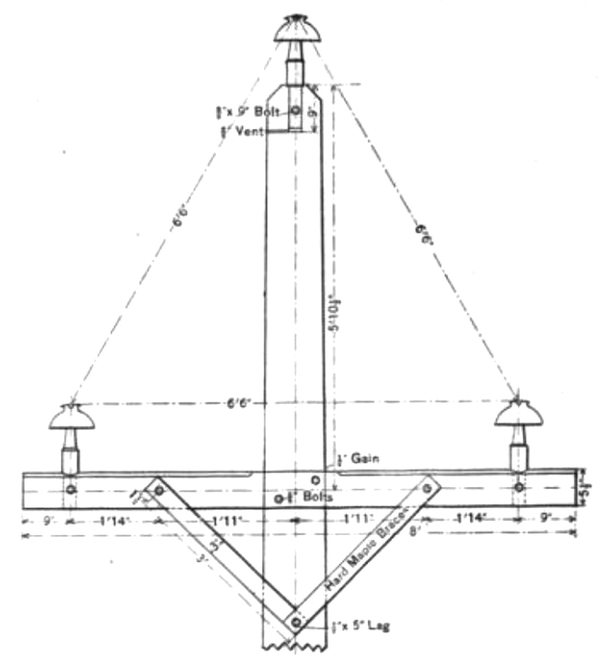 |
| Fig. 4.—Pole Top. |
No better market for power exists in Montana than that at Butte. Mines are numerous and coal is dear. Some power is already transmitted into the town from the Big Hole River southwest of Butte, but not nearly enough to supply the demands.
The Missouri River Power Company is under the general management of M. H. Gerry, Jr., whom many will remember through his former connection with the General Electric Company and with the Metropolitan Elevated Railroad, of Chicago.
| |||
| Fig. 5.—View of Dam. |

